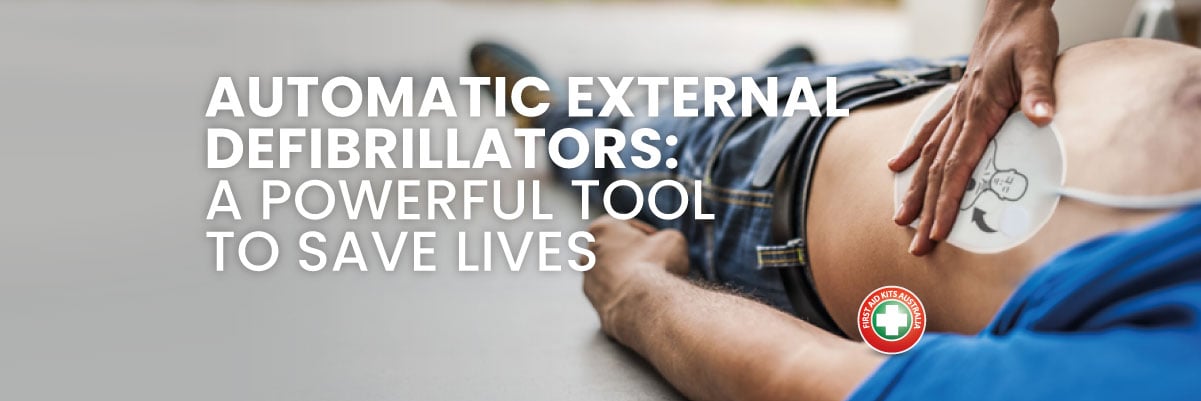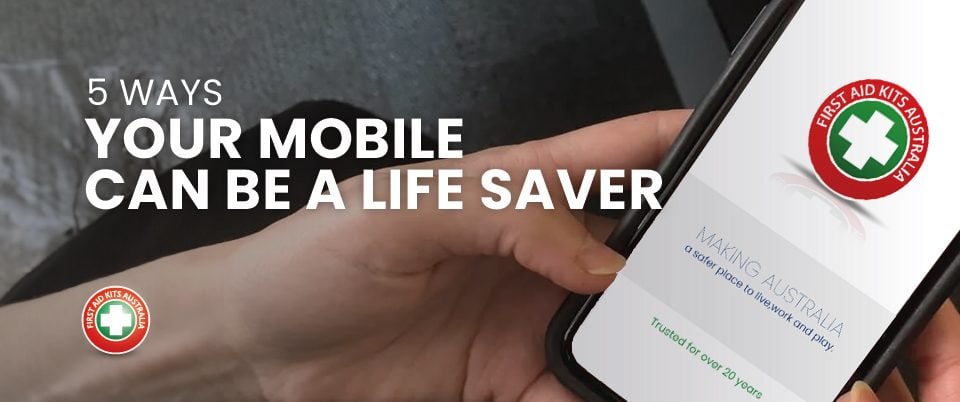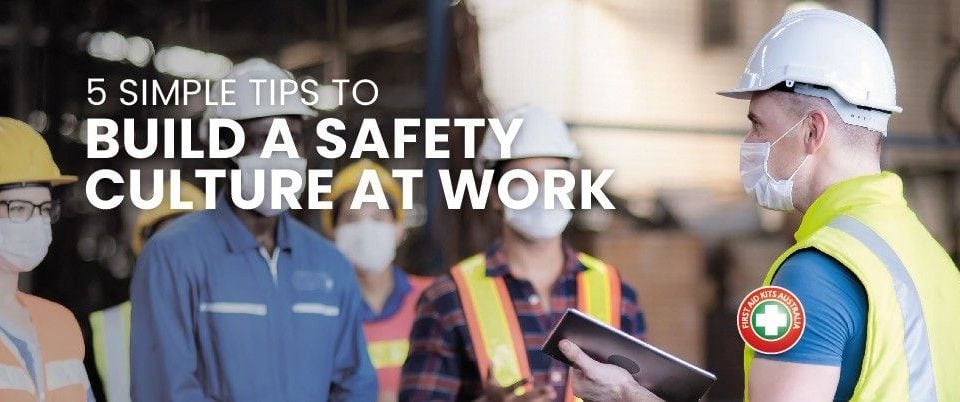
5 Essential Workplace First Aid Skills Everyone Must Know
5 February 2024
First Aid Tips For Head Injuries
21 March 2024Probably the most common notion of a Defibrillator is the one we get from movies: a person lying on the floor and another one that is applying some electrode pads and yells: “clear!” But do you know why defibrillators are important to you?

Knowing what an Automatic External Defibrillator (AED) is and how and when to use one can give you the power to increase the chance of survival of a loved one, a friend, or a colleague by 75%!!!
Therefore, it is CRUCIAL that you learn about defibrillators so you can save a life.
Let’s get to it!
What is a Defibrillator?
A Defibrillator, Defib or AED (Automatic External Defibrillators) is a device that uses an electric current to send a shock to the heart to restore a normal heartbeat.
They are used when a person has a Sudden Cardiac Arrest (a heart malfunction that disrupts the heart’s pumping action and stops blood flow to the body) to help the heart to beat again.
Every year around 30,000 Australians suffer a Sudden Cardiac Arrest outside a hospital. Every minute that passes, the chance of survival without an AED is reduced by 10%.
Therefore, the more AEDs available and the more people that can use defibrillators outside of a hospital the better the chance for survival from cardiac arrest.
How Defibrillators work?
Automated External Defibrillators are used to help a person having a Sudden Cardiac Arrest, an electrical problem in a person’s heart that causes it to stop beating at a normal rhythm. This irregular beat called an arrhythmia prevents the heart from moving oxygenated blood around the body properly, creating a life-threatening situation that requires immediate care.
The main two arrhythmias that will prompt an AED to shock are Ventricular Tachycardia (V-Tach) and Ventricular Fibrillation (V-Fib). In both arrhythmias, the heart acts erratically and cannot adequately pump blood to the brain and extremities of the body. If the heart is not having a sudden cardiac arrest, the AED will not produce a shock.
A Defibrillator will correct the uneven heartbeat by delivering an electric shock to restore normal heart rhythm. Automatic External Defibrillators have two sticky pads, called electrodes, that send information about the person’s heart rhythm to a processor in the AED, which then analyzes the rhythm to find out whether an electric shock is needed.
If the shock is needed, the AED will deliver around 3000 electrical volts in a fraction of a second to help the heart to restart even heartbeats. To give you an idea of its power, that’s enough electricity to light a 100-watt bulb for 23 seconds (some people compare the feeling of it to being kicked by a mule in the chest).
Does an AED start or stop the heart?
The defibrillator’s shock works by depolarizing the heart muscle and eliminating the fatal arrhythmia by completely stopping the heart altogether. After the heart has stopped, it resets the heart’s natural rhythm to beat normally again.
Are Defibrillators dangerous?
No, defibrillators are not dangerous, they are in fact a life-saving device. Sometimes, because of what is pictured in the movies or the jolt that accompanies the shock, many people think that defibrillators can be dangerous.
As we mentioned before, these devices are designed to analyze the heart rhythm and only deliver the electrical shock when it is needed. The AED provides the user with visual and audible prompts, indicating when the shock is to be delivered and when is safe to touch the person in cardiac arrest.
Where Defibrillators are and how to spot them?
Automated External Defibrillators (AEDs) are found in places where large numbers of people gather, such as shopping malls, golf courses, gyms and swimming pools, businesses, airports, hotels, sports venues, and schools. You can also purchase a home-use AED.
The AED is in a case about the size of a large first-aid kit. Many AEDs have a heart logo in red or green. Large letters on the case or the wall where it is stored might spell out A–E–D.
How to use an Automated External Defibrillator?
Here are the steps to use an AED to assist someone suffering from a cardiac arrest :

1. Check if the person is breathing and has a pulse. If the person is not breathing and you can’t find a pulse start CPR

2. Send someone to call for an ambulance. If you’re alone, call 000 first to make sure help is on the way.

3. Turn on the defibrillator. An automated external defibrillator gives you step-by-step voice instructions. Easy-to-understand visual and voice prompts will guide you through the entire resuscitation process, including CPR ― a key link in the chain of survival.

4. Apply the electrode pads where it indicates (usually one goes under the heart and the other underneath the right shoulder)

5. Deliver the shock. Listen to the prompts (a semi-automatic defibrillator will require you to press a button to deliver a shock. A fully automatic defibrillator will administer the shock on its own). The machine will tell the user to stand back and push a button to deliver the shock.

6. Begin CPR after the shock is delivered if CPR is still needed. The AED will also guide users through CPR. The process can be repeated as needed until emergency crews take over.
Do you need training to use a Defibrillator?
No, you do not need training to use an AED. Automatic External Defibrillators (AEDs) are designed to be easy to use so that any member of the public can help someone in cardiac arrest before medical personnel arrives.
Most of the defibrillators for public access are small, lightweight, and semi or fully automatic. They provide step-by-step instructions on how to operate them, how to position the pads for delivering the shock and what to do after.
But if you will like to feel more confident, undertaking a CPR course can help you with that.
If you are thinking to buy a Defibrillator, we can help you to choose the one that is appropriate to your circumstances and provide you with training and information.
Our goal at First Aid Kits Australia is to make Defibrillators as widely accessible as possible. We do this by keeping our prices as low as possible and stocking the best brands. Just head to our website Defibrillators AEDs – First Aid Kits Australia and check them out!







